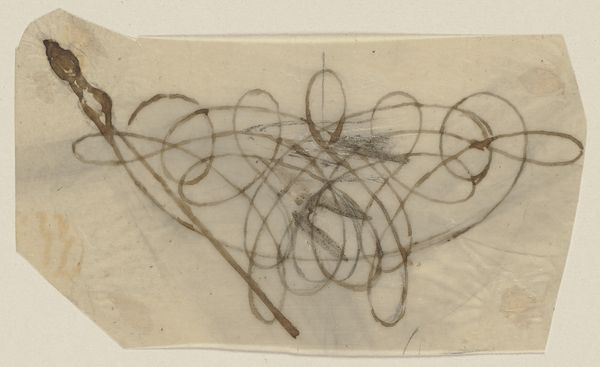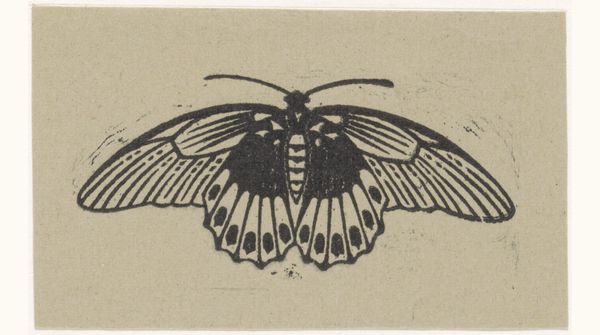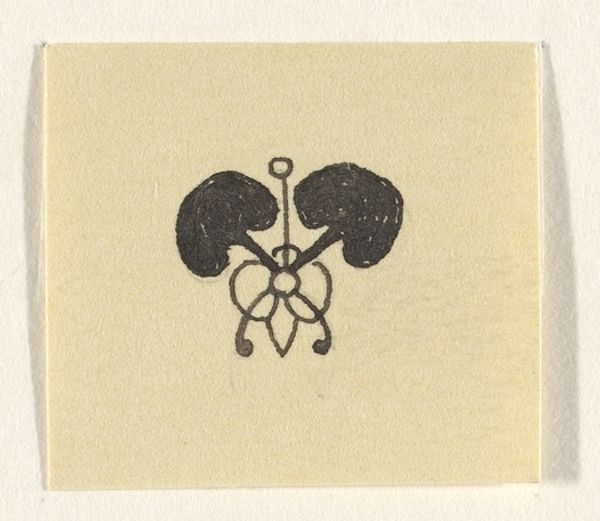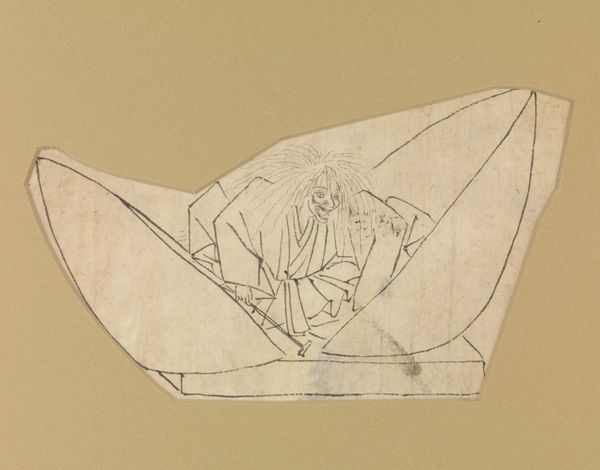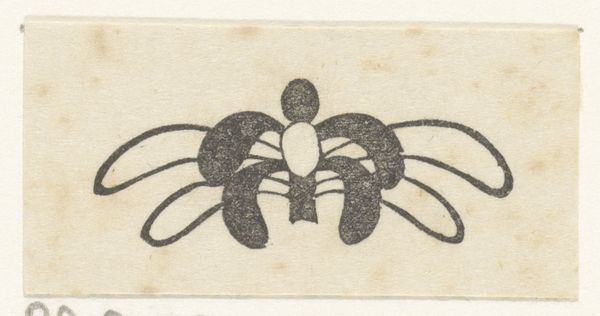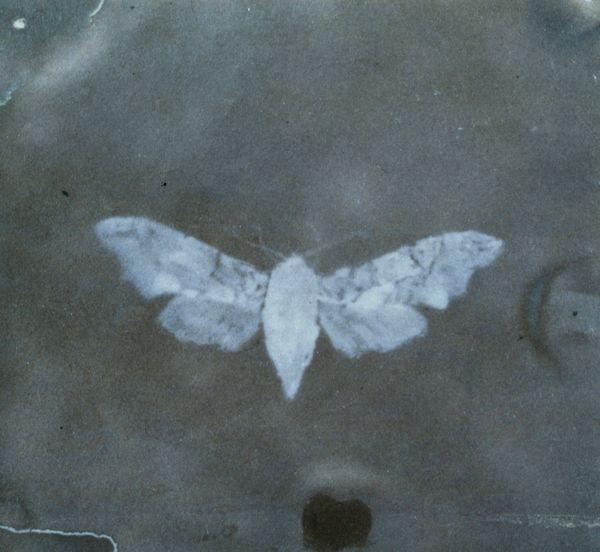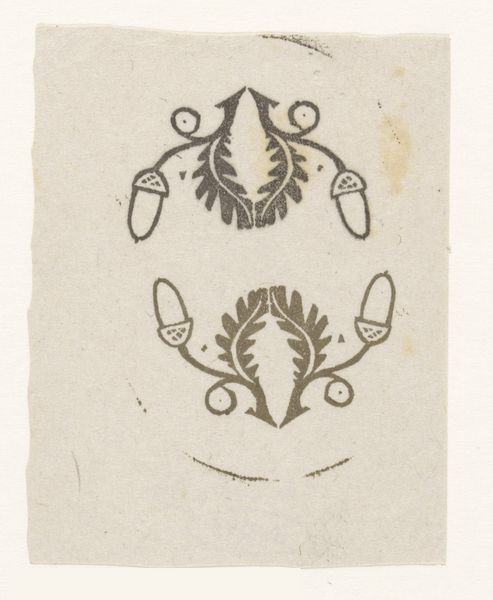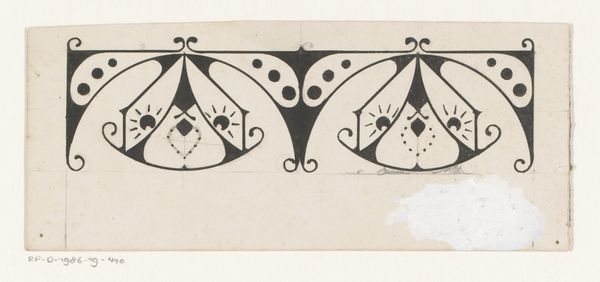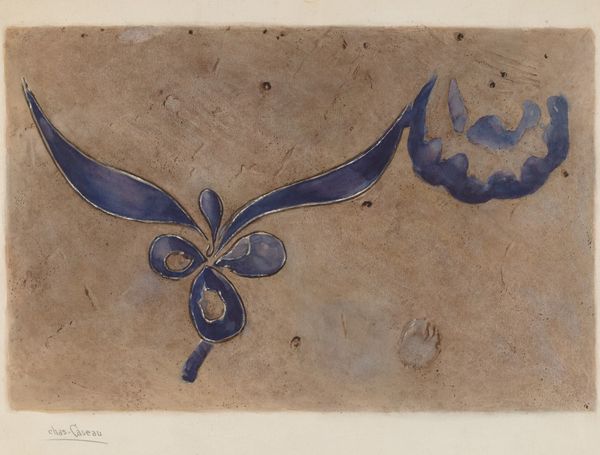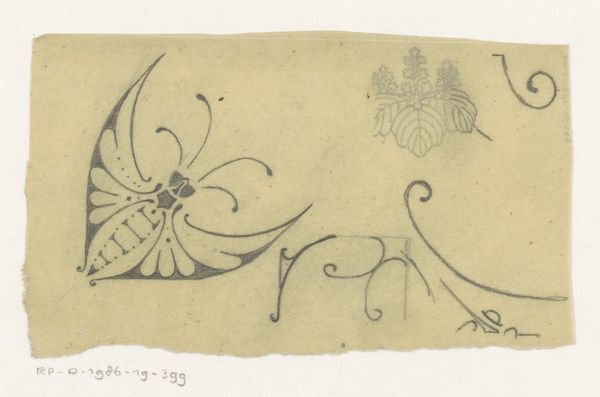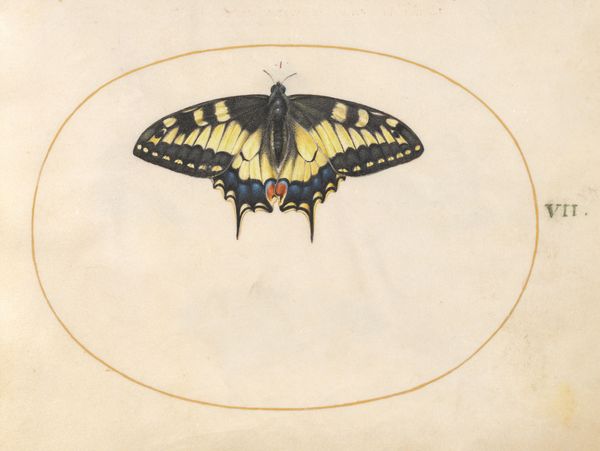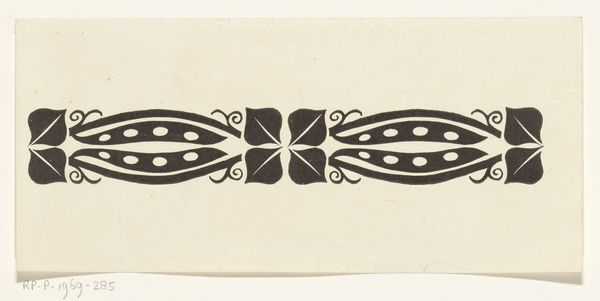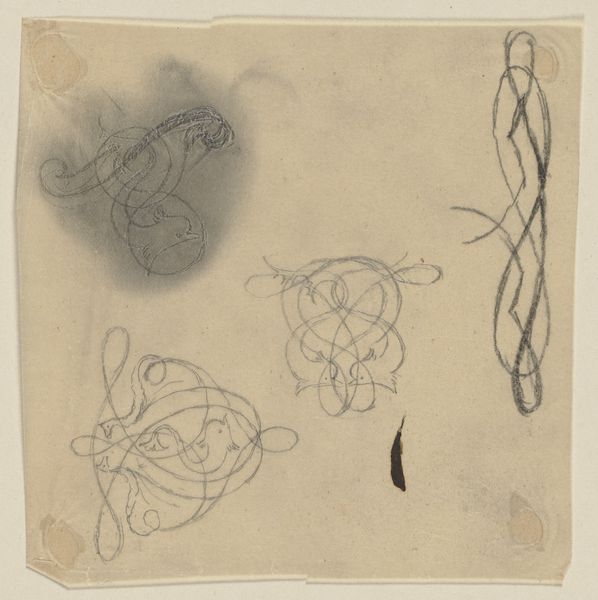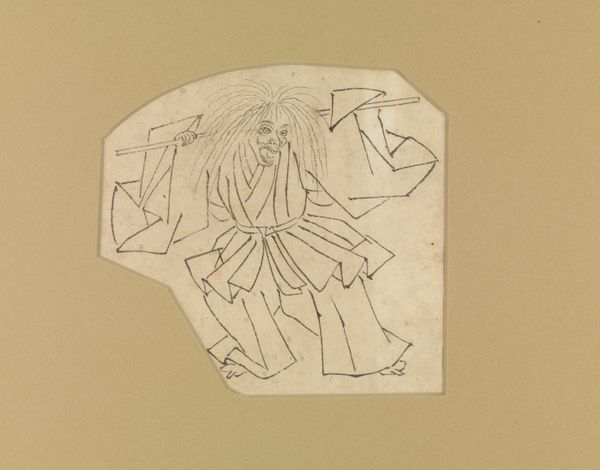
drawing, print, paper, ink, woodcut
#
drawing
#
organic
# print
#
figuration
#
paper
#
ink
#
coloured pencil
#
woodcut
#
line
Dimensions: 40 mm (height) x 55 mm (width) (bladmaal)
Curator: So simple, yet intriguing. It feels almost like a child's drawing – immediate and honest. Editor: Indeed. What you are seeing is "Insekt", an ink and woodcut on paper attributed to Joakim Skovgaard, made sometime between 1865 and 1870. It's part of the collection at the SMK, Statens Museum for Kunst. Curator: "Insect," aptly named. The rough lines, almost shaky, against that toned paper - it makes me think about vulnerability. The creature itself looks like it’s on the verge of taking flight, despite the limitations of the medium. Considering that Skovgaard’s practice intersects with the rise of scientific positivism, I wonder about the social politics present at the moment of inscription and reception. Editor: Absolutely, its placement within the cultural landscape informs how we see it. There is an apparent disjunction between this artist’s exploration of organic forms and Denmark's rurality, which leads me to consider its relationship with agrarian communities, class divisions, and popular entertainment venues that arose at this time. Curator: You are making me rethink the social function and context for figuration. Is it possible this little woodcut critiqued elitist aesthetics by prioritizing the everyday – especially insects, perceived negatively at that time? Maybe it suggests beauty and importance even in mundane forms that inhabit Denmark? Editor: It's quite possible. The scale also matters – it being a very intimate work, presumably created for a private context, allowing us insight to explore the popularization and study of entomology in visual cultures accessible at this time through printed materials like books or trading cards etc. I wonder how it intersects with class-related politics too because the artist seemed willing create works accessible among broader segments rather simply those tied solely aristocratic networks Curator: It’s intriguing how this small piece holds so much – a visual statement about the politics related identity when considered in conjunction within prevailing visual tropes throughout those historical landscapes! The creature can also then symbolizes broader thematic explorations where organic or natural worlds symbolize feminine autonomy—juxtaposed directly onto oppressive hegemonic regimes impacting those marginalized within it’s systems and policies as imposed. Editor: A perspective worth exploring. Considering art's purpose within our modern society, maybe it serves both to disrupt and document—holding complex perspectives across timeframes beyond surface representation only when dissected within its specific matrix along many axes.
Comments
No comments
Be the first to comment and join the conversation on the ultimate creative platform.
